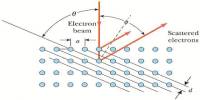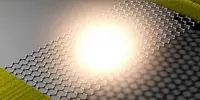A narrow band of dancing lights ranging in color from white to mauve that bends across the sky marks the unexplained Strong Thermal Emission Velocity Enhancement, or STEVE. We now have photographs of a more typical stable aurora red (SAR) arc changing into a STEVE and some understanding of atmospheric dynamics at the time, but its causes are still mostly unclear. Since humanity traveled far enough to the poles to observe auroras, people have undoubtedly been captivated by them. Nearly 3,000 years have passed since the first description is thought to have survived, and several civilizations have more recent stories. But more people having access to digital cameras has led to the discovery of hitherto unreported auroral events.
The most recent instance is STEVE, the first scientific study on which was published in 2018. A recent article published in Geophysical Research Letters not only seems to corroborate STEVE but also provides some insight into its nature and origins. Since then, there have been a number of developments, including the claim that it is nothing more than skyglow. The report claims that neither STEVEs nor SARs are genuine auroras. As they appear at lower latitudes than the actual auroral zone, they can be thought of as aurora-adjacent. The report states that rather than being caused by energetic particles showering down into our atmosphere, “their optical signals appear to be generated by tremendous thermal and kinetic energy in Earth’s atmosphere.”
An extremely brilliant SAR that changed into a STEVE while being shot by a citizen scientist in Dunedin, New Zealand in March 2015, was captured in a sequence of 10-second exposures. The photographer was unaware of what they had witnessed because it was before STEVE was given a name. However, after receiving the video, Professor Carlos Martinis of Boston University and his team compared it to satellite observations made at the same time and images captured by an all-sky imager at Mount John Observatory, about 200 kilometers (120 miles) to the north. A vivid SAR red arc is substituted by a purplish-white STEVE in the Dunedin picture. At Mount John that night, there was more cloud, which caused the pictures to be considerably more erratic.
The authors of the research were able to identify the source of the first emissions to a height of 425 kilometers, albeit this gradually dropped, by merging the information from the two sites. Although the height of the SAR arc is typical, the brightness—which was 10–12 times more than usual—was anything else. The occurrences occurred during a geomagnetic storm, much like real auroras.
Fast-moving particles that the authors refer to as “subauroral ion drift” were observed by satellites flying overhead during the SAR and intensified at higher temperatures during the STEVE. The research offers a “plausible generating process” for STEVE in the form of ions interacting with nitrogen molecules, but it largely just collects the information from the three sources for interpretation by others.
The authors write in their conclusion, “These observations illustrate the advantages of merging citizen scientist observations with scientific data to help identify new links in Geospace.” This might also be translated as, “Please transmit any STEVE photos you may have to scientists.” Although the photos demonstrate that there are few outliers, STEVEs are often relatively weak, which helps to explain why they were not formally described until recently.
















